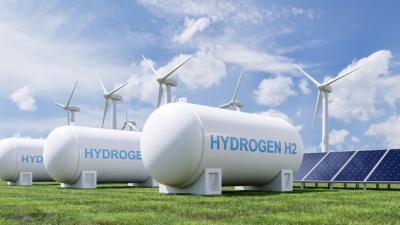Govt’s green hydrogen push to cut fossil fuel imports by Rs 1 trillion
India has launched the National Green Hydrogen Mission, which was approved by the Union Cabinet in January 2022, with the objective of making the country a leading producer and supplier of the green fuel.
The mission aims to reduce dependence on imported fossil fuels and feedstock and create export opportunities for Green Hydrogen and its derivatives to help the world fight climate change.
Green Hydrogen is considered a promising alternative for enabling India’s transition to renewable energy and achieving Net Zero emissions by 2070.
Hydrogen can be utilized for long-duration storage of renewable energy, replacement of fossil fuels in industry, clean transportation, and potentially also for decentralized power generation, aviation, and marine transport.
The Mission outcomes projected by 2030 are:
* Development of green hydrogen production capacity of at least 5 MMT (Million Metric Tonne) per annum with an associated renewable energy capacity addition of about 125 GW in the country
* Over Rs.8 lakh crore in total investments
* Creation of more than six lakh jobs
* Cumulative reduction in fossil fuel imports worth over Rs 1 lakh crore
* Abatement of nearly 50 MMT of annual greenhouse gas emissions
At present, India has only two hydrogen refuelling stations — one each at Indian Oil’s R&D Centre, Faridabad, and the National Institute of Solar Energy, Gurugram. NTPC is going to start the operations of India’s first public green hydrogen fuelling station this month in Ladakh, which will be used to supply fuel to five hydrogen fuel cell buses.
India’s first hydrogen fuel bus was launched in Ladakh in August this year and has been carrying out trial runs in the region.
In January 2023, the Union Cabinet approved Rs 19,744 crore for the National Hydrogen Mission.
The amount included Rs 17,490 crore for the Sustainable India Green Hydrogen and Technologies (SIGHT) programme, Rs 1,466 crore for pilot projects, Rs 400 crore for research and development, and Rs 388 crore for other mission components.
Types of hydrogen: Depending on the nature of the method of its extraction, hydrogen is categorised into three categories, namely, Green, Grey and Blue.
* Green Hydrogen is produced using electrolysis of water with electricity generated by renewable energy. The carbon intensity ultimately depends on the carbon neutrality of the source of electricity (that is, the more renewable energy there is in the electricity fuel mix, the “greener” the hydrogen produced).
* Grey Hydrogen is produced via coal or lignite gasification (black or brown), or via a process called steam methane reformation (SMR) of natural gas or methane (grey). These tend to be mostly carbon-intensive processes.
* Blue Hydrogen: It is produced via natural gas or coal gasification combined with carbon capture storage (CCS) or carbon capture use (CCU) technologies to reduce carbon emissions.

